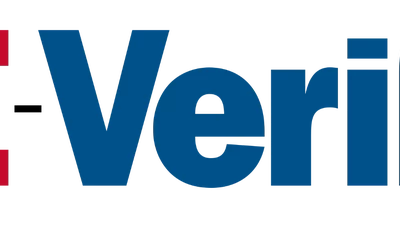We’re nearly halfway through 2025, and several employment law changes have already taken effect.
OSHA has finalized a long-delayed rule for the construction industry. New York State has expanded wage, leave, and discrimination protections. And I-9 audits are increasing nationwide, with multimillion-dollar fines already hitting employers.
Here’s what’s changed so far, and what employers need to do now to stay compliant.
OSHA Finalizes PPE Fit Rule for Construction
As of January 13, OSHA now requires that all personal protective equipment (PPE) for construction workers must properly fit. This includes gloves, safety glasses, harnesses, and more.

The rule addresses a long-standing issue. Most PPE has been designed for men, even though women now make up over 10% of the construction workforce. Poor fit makes gear less effective and can create new hazards.
“It only took them a decade to act while women in construction continued to wear gear that put them in danger,” said Chandra Kill, CEO of KRESS Inc.
While this rule is a step forward, it still lacks clear standards. OSHA does not define what “properly fits” means. That leaves employers to decide, and workers with little recourse.
A Construction Dive report shows how common this problem is. Women report wearing gear that is too large, unsafe, or unavailable in their size. A NIOSH focus group found that some employers do not even consider ordering women’s sizes.
“The reality is, women have been forced to just deal with the problem,” said Kill.
Employers should:
- Check that PPE fits each worker correctly
- Offer properly sized options for all roles
- Avoid defaulting to men's sizes only
New York’s 2025 Employment Law Updates
New York began the year with several changes to wage, leave, and anti-discrimination laws. These updates affect employers across the state and are likely to influence national trends.

Wage and Salary Thresholds:
- The minimum wage increased to $16.50 in New York City, Long Island, and Westchester County, and to $15.50 elsewhere.
- Salary thresholds for exempt workers also rose. In NYC, exempt employees must now earn at least $64,350 annually; outside the city, the threshold is $60,405.80.
New Leave Laws:
- A new prenatal leave law requires employers to provide 20 hours of paid leave per year for pregnancy-related appointments.
- Under the Paid Family Leave program, benefits increased to $1,177.32 per week, with updated employee contribution rates.
Workplace Safety and Discrimination:
The Retail Worker Safety Act takes effect in June 2025. Retailers with 10 or more employees must implement a violence prevention plan and train workers.
The state constitution now prohibits discrimination based on gender identity, pregnancy, and reproductive healthcare decisions.
“These updates reflect a growing shift in employment law,” said Chandra. “Employers are being held to higher standards in how they treat and protect their workers.”
- What to do now:
- Audit payroll and exemption classifications
- Update leave policies and employee handbooks
- Train managers on new safety and discrimination standards
I-9 Audits and E-Verify: Enforcement Is Increasing
In April, ICE fined three Colorado companies over $8 million for I-9 violations. This included a $6.1 million fine for one company where 100 percent of its I-9s were incorrect. ICE confirmed 143 unauthorized workers across the three employers.

“These fines could have been prevented,” said Constance Brackett, Chief of Staff at KRESS. “Ignoring I-9 rules puts everything at risk. It’s not just paperwork. It’s compliance with federal law.”
ICE is now auditing businesses of all sizes. Common violations include missing forms, using the wrong documents, and failing to reverify expired work authorizations. Fines for paperwork mistakes can exceed $2,800 per form. Hiring unauthorized workers can result in penalties over $28,000 per offense.
E-Verify Can Help, but Only If Used Correctly
E-Verify compares a new hire’s information against federal records. It confirms work authorization and flags mismatches. The system is free, but it requires training and proper use.
New tools like E-Verify+ and E-Verify NextGen introduce remote verification and employee-managed submissions, adding new steps for HR teams to manage.
KRESS has supported E-Verify since its earliest days. We help employers register, train staff, and handle nonconfirmations. We also offer full I-9 audits and remediation services for businesses preparing for future inspections.
Next steps for employers:
- Review every I-9 for accuracy
- Use E-Verify to confirm work eligibility
- Train HR on documentation and audit prep
What Employers Should Do Now
It’s already a busy year for employment law changes. OSHA is stepping up safety rules. States like New York are raising compliance standards. And federal audits are bringing steep penalties for simple paperwork mistakes.
Employers should not wait until they’re audited or sued to take action. Now is the time to:
- Review internal policies and training
- Update I-9 files and wage classifications
- Ensure leave and safety rules match current laws
At KRESS, we help businesses stay ahead of changing regulations. From I-9 audits to E-Verify support and policy updates, our team makes compliance easier and more manageable.
Need help catching up? Contact KRESS today to schedule a compliance review.









